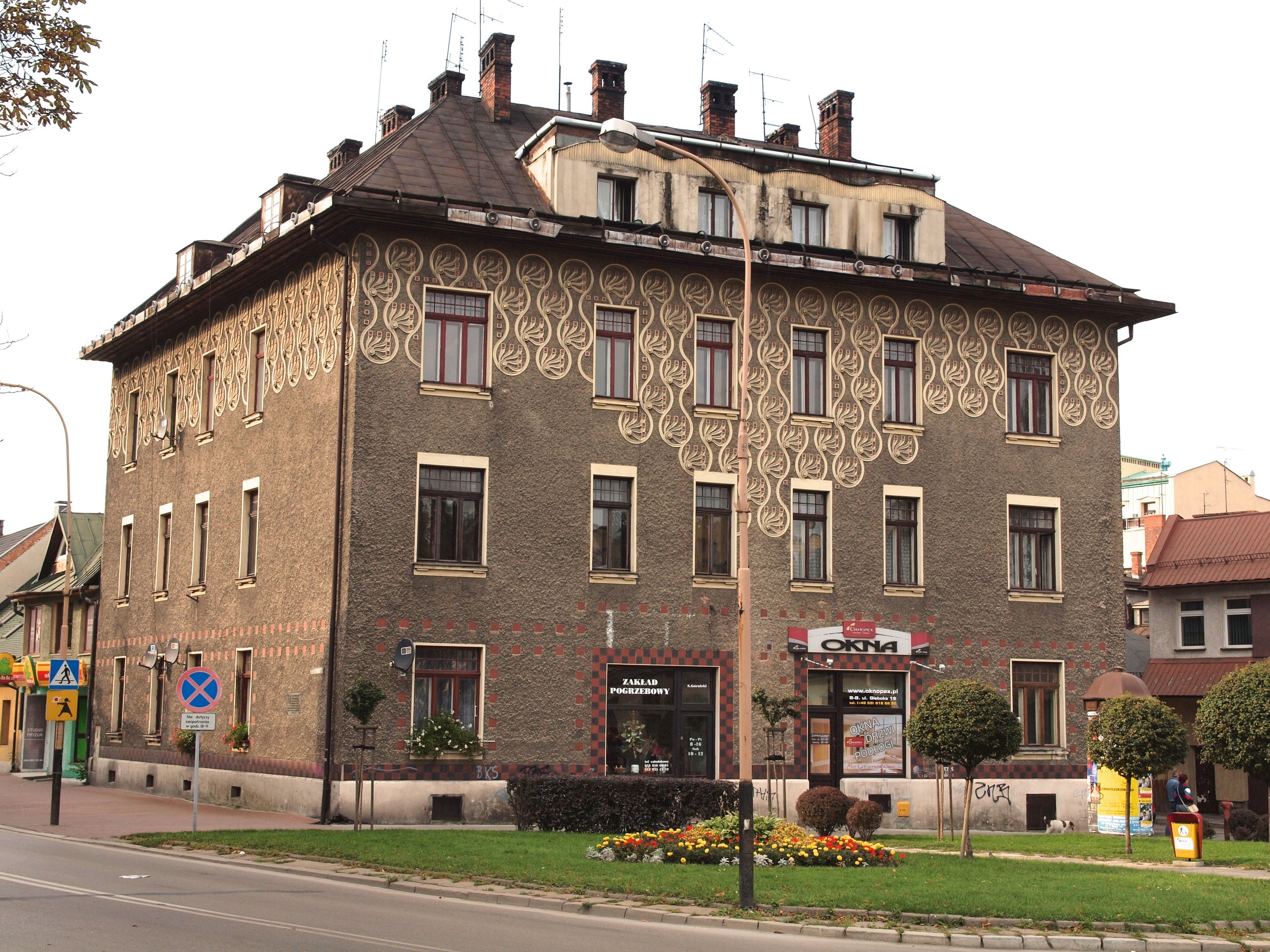#1578. Building with Secession-style façade: wave-like ornamentation and contrasting floors
The photograph shows a remarkable historical building located on an urban street. This three-story structure with a sloped roof crowned by several brick chimneys is a striking example of early 20th century European architecture with Art Nouveau elements.
The façade of the building makes a strong impression with its distinctive decorative treatment. The ground floor features a more utilitarian style, with simple finishing and red geometric ornamentation at the lower section. Commercial spaces with storefronts and signage are located at this level.
The upper floors are distinguished by rich decorative solutions. The second floor is particularly notable, adorned with exquisite relief ornamentation in the Secession style (Austrian variant of Art Nouveau) – elegant, wave-like elements in a light color against the gray background of the walls. The ornament creates a unique rhythmic pattern resembling stylized plant motifs characteristic of Art Nouveau.
The windows are evenly distributed throughout the perimeter, framed with simple casings. The roof has a complex form, its dark color contrasting with the lighter walls. The attic floor is designed differently – in a simpler style with beige finishing.
Overall, the building represents an excellent example of provincial architecture from Central or Eastern Europe, where functionality combines with decorative elements, and traditional forms are enriched with Art Nouveau features.
